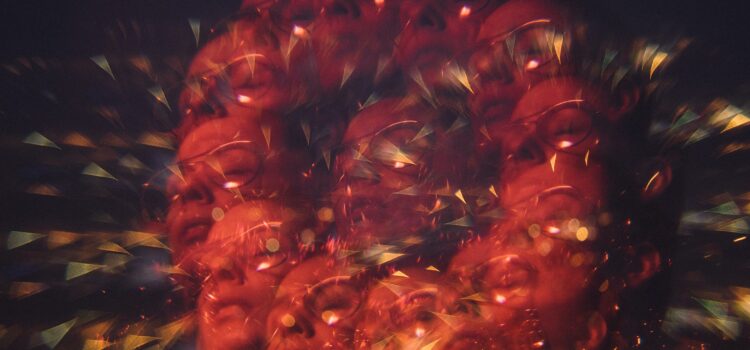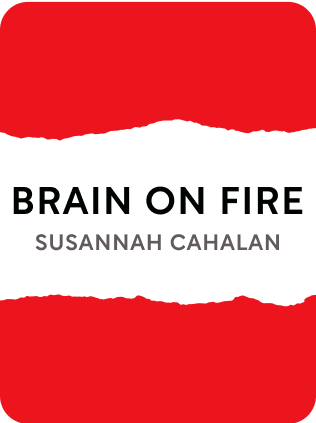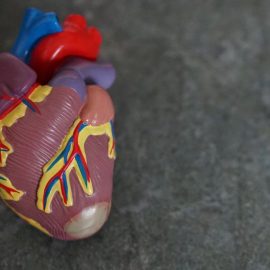

This article is an excerpt from the Shortform summary of "Brain On Fire" by Susannah Cahalan. Shortform has the world's best summaries of books you should be reading.
Like this article? Sign up for a free trial here .
What are psychosis hallucinations? Why did Susannah Cahalan suffer from psychosis, hallucinations, and seizures?
Psychosis, hallucinations, and seizures are all symptoms of anti-NMDA-receptor encephalitis. The disease in Brain on Fire caused a number of frightening changes to Susannah.
Read more about the psychosis, hallucinations and other symptoms she suffered.
The Hallucinations Begin
En route to interview John Walsh at the Post the next day, Susannah feels the walls caving in, the posters contracting and expanding. Her perspective narrows, like she’s looking through a viewfinder. She tells herself to breathe and somehow makes it to the office where she’s to interview Walsh.
Walsh starts speaking, but Susannah can’t understand what he’s saying. Disassociated from his words, Susannah laughs uproariously at things that aren’t funny. Annoyed, Walsh’s publicist cuts the interview short.
Pressuring herself to appear competent, Susannah walks Walsh to the elevators. Unable to maintain her balance, she keeps bumping into the walls on the way.
The next day, Susannah has another hallucination on her way to work. The garish colors on the Times Square billboards make the hairs on her neck stand up. A scrolling banner makes her want to vomit. She’s instantly hit by a migraine.
She stumbles into work and tells Angela about her strange experience in Times Square. Frightened, Angela suggests that Susannah see another doctor.
Finally, Susannah acknowledges to herself that something is wrong with her. She bursts into uncontrollable tears and runs to the bathroom to splash cold water on her face, but as she looks around the bathroom, the stalls suddenly look alien to her. Has she really ever used one before?
Susannah asks another colleague for advice, and the woman gives her an excellent piece of counsel: Susannah should write down every symptom, no matter how small it is. Even the tiniest detail could turn out to be important. Susannah returns to her desk, writes down the word “insomnia” and shouts, “Everything’s going to be great!”
Buoyantly happy for the moment, Susannah saunters over to Paul’s desk and invites him downstairs for a smoke. As she talks a mile a minute, Paul becomes increasingly concerned, convinced she’s on the verge of a breakdown. Excusing himself, he goes upstairs and tells Angela to call Susannah’s mom.
Susannah’s now by herself on the street. She feels wobbly. She floats above the crowd, seeing the top of her own head. The Wiccan librarian walks by and tells Susannah she’s just experiencing astral travel.
A Fast Downward Slide
Allen and Susannah’s mom agree to let Susannah return to Manhattan under her father and stepmother’s care. All goes well at first, but as Susannah and her dad head for the subway, Susannah’s paranoia returns. She starts screaming on the street, and her father has to push her into a cab to get her to his home in Brooklyn. “They’re kidnapping me!” Susannah yells at the cabbie. She tells her dad she’s calling the police. She’s convinced she isn’t safe in his care.
Exhausted by the time they get to her dad’s place, Susannah just sits on the couch and stares as her dad and stepmom, Giselle, prepare her favorite meal, pasta. When they set it before her, though, Susannah has another hallucination; the tomato sauce is too bright. The basil pulsates. The cheese glistens. Susannah refuses to eat. After dinner, she has another hallucination like the one she had in the car with Allen. She thinks she hears Giselle saying, “You’re a spoiled brat,” even though Giselle’s lips don’t move. Was this one of the psychosis hallucinations?
Susannah has other psychosis hallucinations that night. A painting comes alive. A bust of Lincoln follows her with its eyes. Her childhood dollhouse is haunted. Her father is beating Giselle.
Convinced her father is going to kill her, Susannah is desperate to get out. She runs to the front door of the brownstone and bangs her fists against the door, screaming, “Let me out! Help!”
Psychosis and Hallucinations Continue in the Hospital
Susannah is admitted to NYU Langone’s Advanced Monitoring Unit (AMU), for patients with severe epilepsy. It has been ten days since her first seizure.
That evening, a neurologist comes to Susannah’s room to conduct a health history. Susannah accurately conveys information about her health but also tells the neurologist that her dad is changing into different people to play tricks on her. “Unclear if hallucinating,” the neurologist diagnoses. Later that night, Susannah is convinced that someone is watching her in the bathroom. She calls her mom, telling her that the nurses are trying to hurt her.
When a nurse enters the room to tell Susannah not to use the phone, Susannah has another hallucination—she “hears” the nurse saying, without moving her lips, “I see you on the news.”
Psychosis, Hallucinations, and Recovery
Even fully recovered, Susannah can remember only the hallucinations she experienced during her illness; she can’t recall its day-to-day reality. This strange discrepancy makes her wonder whether she can rely on her own mind. Why does she continue to favor hallucinations over reality? Why do those particular hallucinations persist? How did they materialize in the first place?
Medical Aside: Hallucinations
Hallucinations occur when the brain perceives a sensation that has no external source. Because hallucinations are self-generated, they are believable and remembered in vivid detail, a process termed the generation effect.
Mental illness is not the sole source of hallucinations. A 2010 study at Cambridge University found that injecting healthy student volunteers with the drug ketamine broke down their sense of reality. Ketamine blocks NMDA receptors in the brain, much like the autoantibodies in Susannah’s illness.

———End of Preview———
Like what you just read? Read the rest of the world's best summary of Susannah Cahalan's "Brain On Fire" at Shortform .
Here's what you'll find in our full Brain On Fire summary :
- How a high-functioning reporter became virtually disabled within a matter of weeks
- How the author Cahalan recovered through a lengthy process and pieced together what happened to her
- How Cahalan's sickness reveals the many failures of the US healthcare system






